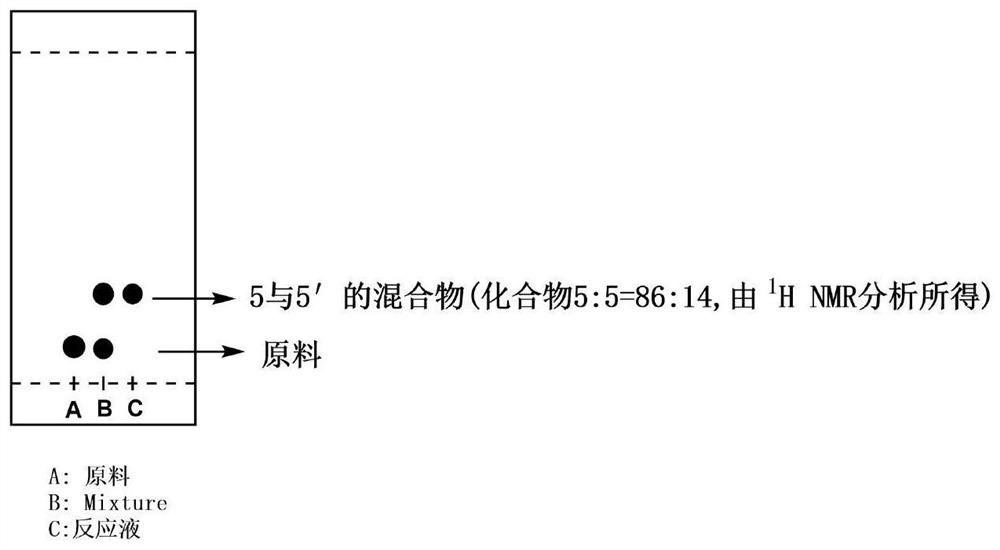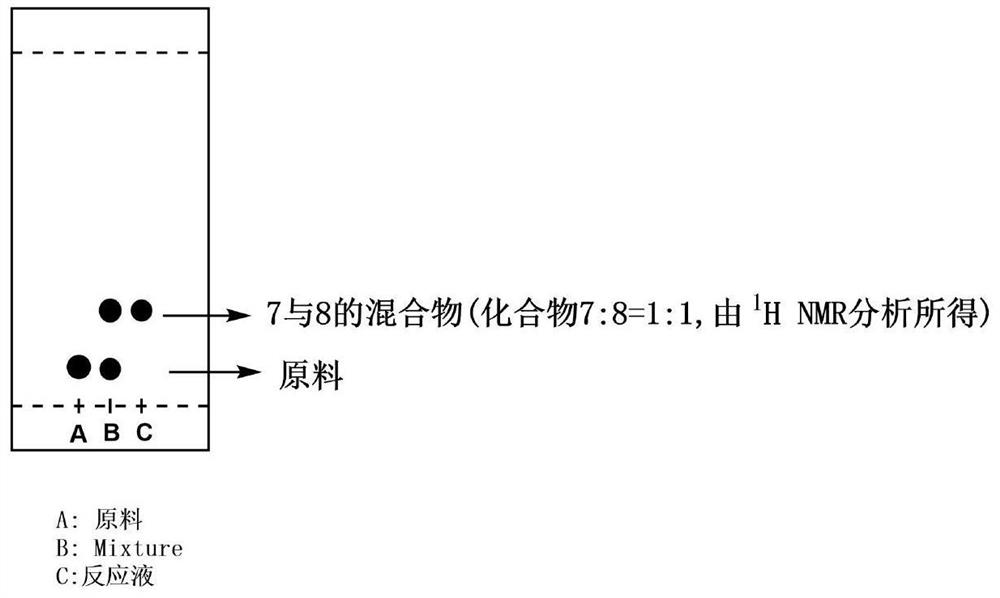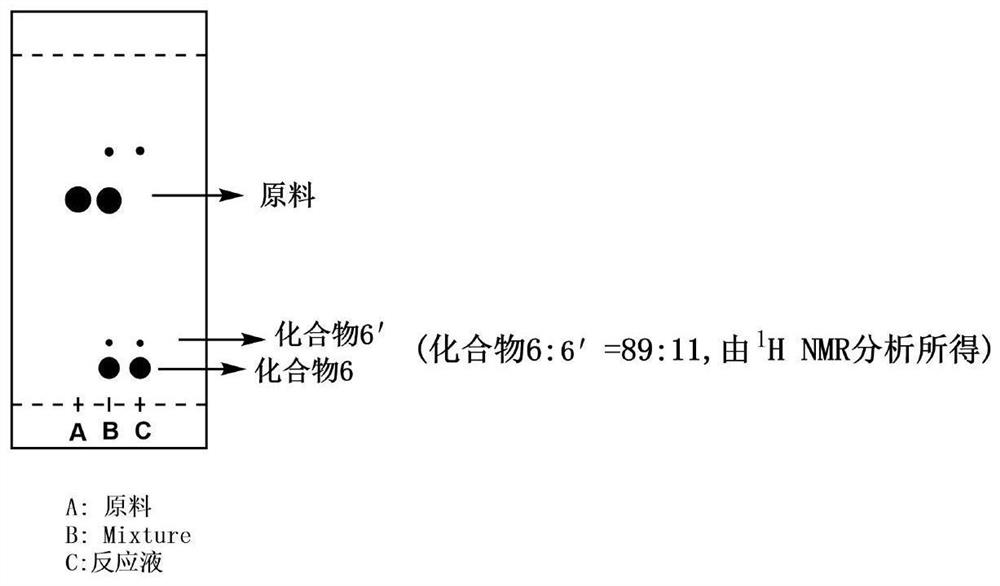Method for synthesizing lithocholic acid by taking BA as raw material
A synthesis method and technology of lithocholic acid, applied in the directions of steroids, organic chemistry, etc., can solve the problems of unsuitability for large-scale industrial production, low yield and high synthesis cost
- Summary
- Abstract
- Description
- Claims
- Application Information
AI Technical Summary
Problems solved by technology
Method used
Image
Examples
Embodiment 1
[0079] The preparation of embodiment one formula (2) compound
[0080] (1-1) Add BA (10.00g, 30.26mmol), TEMPO (47mg, 0.30mmol), 100mL DCM, NaHCO in sequence to a 500mL single-necked flask 3 (3.43g, 40.85mmol), H of tetrabutylammonium bromide (977mg, 3.03mmol) 2 O (40 mL) solution and NCS (4.65 g, 34.80 mmol) were reacted at 0° C. for 5 h. After TLC detects that the raw material has reacted completely, add sodium thiosulfate pentahydrate solution (1.3g sodium thiosulfate pentahydrate / 25mLH 2 O), stirred at 10°C for 20min, separated, the aqueous phase was extracted with dichloromethane (50mL×3), the organic phases were combined, added 120mL of 1% sodium hydroxide solution, stirred for 30min, separated, and the aqueous phase was extracted with dichloromethane (50 mL) back-extracted once, washed with water, and concentrated under reduced pressure to obtain compound 2 (light yellow solid, 9.50 g, molar yield 95%).
[0081] (1-2) Add BA (5.0 g, 15.13 mmol), IBX (8.5 g, 30.26 mmo...
Embodiment 2
[0082] The preparation of embodiment two formula (3) compound
[0083] (2-1) Compound 2 (1.0 g, 3.04 mmol), ethoxyformylmethylenetriphenylphosphine (2.12 g, 6.08 mmol) and toluene (15 mL) were successively added into a 100 mL one-necked flask, and the reaction was refluxed for 4 h. TLC detected that the reaction was complete, concentrated under reduced pressure, and purified by silica gel column chromatography (PE / EA=3 / 1, v / v) to obtain compound 3 (1.15 g, white solid, molar yield 98%).
[0084] (2-2) Sodium hydride (913mg, 22.83mmol) and 50mL THF were successively added into a 250mL single-necked flask, and after stirring for 15min, triethyl phosphonoacetate (4.5mL, 22.83mmol) was successively added, compound 2 (5.00g, 15.22 mmol), reacted at 0°C for 4h. After the reaction of the raw material was detected by TLC, it was concentrated under reduced pressure and slurried with methanol to obtain compound 3 (white solid, 5.76 g, molar yield 95%).
[0085] (2-3) Compound 2 (1.0 g...
Embodiment 3
[0087] The preparation of embodiment three formula (4) compound
[0088] (3-1) Add compound 3 (1.0g, 2.51mmol), 20mL isopropanol, 1.0g Raney Ni, sodium tert-butoxide (482mg, 5.02mmol), H 2 After replacement, pressurize to 4.0 MPa, and react at 90° C. for 48 hours. After the reaction was detected by TLC, acetic acid was added to adjust the pH to 5, filtered with diatomaceous earth, the filtrate was concentrated under reduced pressure and dissolved in ethyl acetate (30mL), washed with water and saturated sodium chloride solution successively, dried over anhydrous sodium sulfate, and decompressed. Concentrate and perform column chromatography (PE:EA=2:1) to obtain lithocholic acid (841 mg, white solid, molar yield 89%).
[0089] (3-2) Add compound 3 (1.0g, 2.51mmol), 20mL isopropanol, 1.0g Raney Ni, sodium tert-butoxide (482mg, 5.02mmol) and H 2 After replacement, pressurize to 4.0MPa, and react at 90°C for 24h. After the reaction of the raw materials was detected by TLC, ac...
PUM
 Login to View More
Login to View More Abstract
Description
Claims
Application Information
 Login to View More
Login to View More - R&D
- Intellectual Property
- Life Sciences
- Materials
- Tech Scout
- Unparalleled Data Quality
- Higher Quality Content
- 60% Fewer Hallucinations
Browse by: Latest US Patents, China's latest patents, Technical Efficacy Thesaurus, Application Domain, Technology Topic, Popular Technical Reports.
© 2025 PatSnap. All rights reserved.Legal|Privacy policy|Modern Slavery Act Transparency Statement|Sitemap|About US| Contact US: help@patsnap.com



